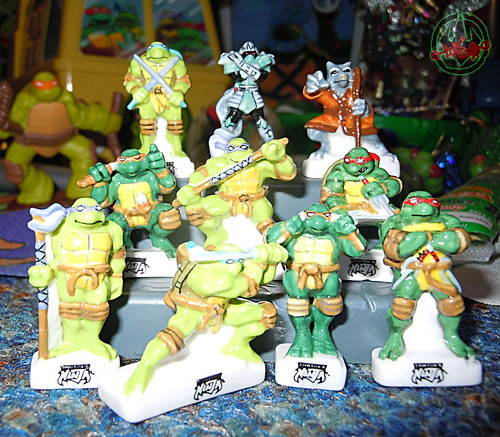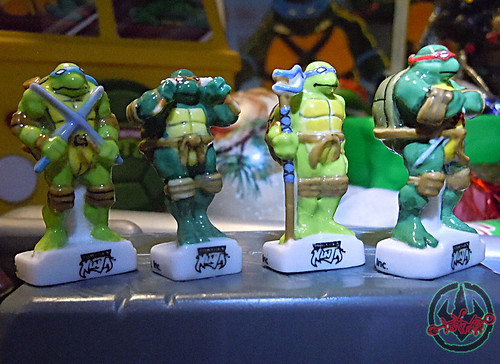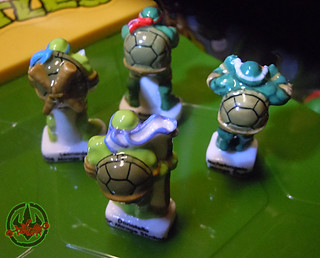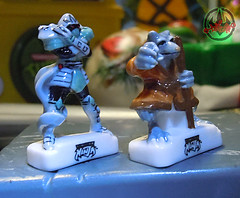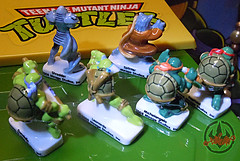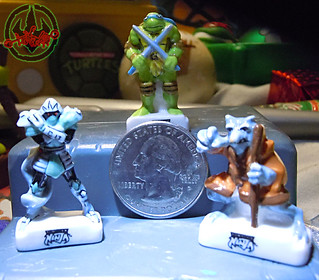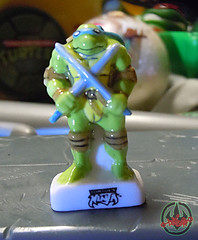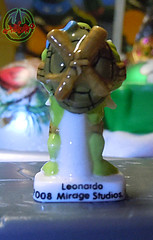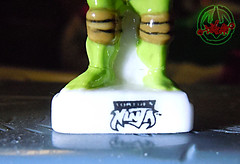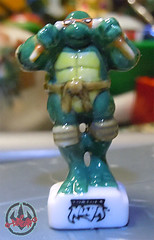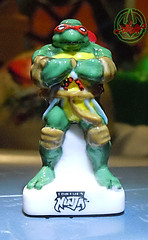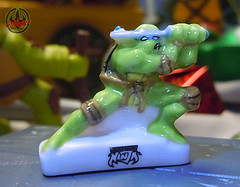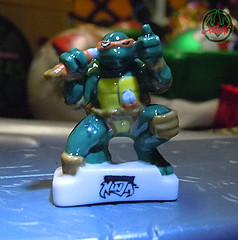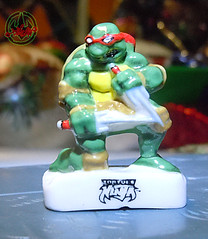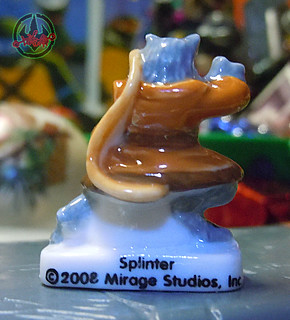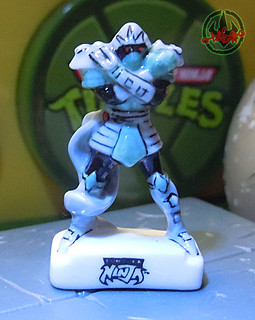approx. 3 cm, a little over an inch

–>> French prototypes from **PRIME, a gift from this past holiday season from a friend. Possibly due to the nature of the items being prototypes, some damage had occurred. Or perhaps with this kind of small item breakage may be common. Not sure.
The trinkets arrived with all the figures intact with exception to Shredder, Standing Raph, and the Sword wielding stanced Leo. Repairs and restorations were made to the broken trinkets with paint applications and glazes reapplied to the best of my abilities.
From what i can tell, the prototypes appear to be almost exactly the same miniatures appearing in French stores,online, in bakeries or what have you. The words “PROTO No 1” or “PROTO MOD1”, however appear on the bottom of the figures’ bases except for the standing Raph one which is blank.
These types of minis can be bought separately for collecting , but the traditional usage of these trinkets are as fèves or “BEANS” for King Cakes in celebration of the Epiphany during the Christmas time from countries like Belgium, France, and Mexico and elsewhere leading up to Mardi Gras & Carnival. At least in countries where it is legal to put non-edible items in food.
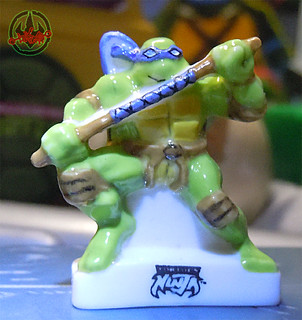
The Epiphany ( January 6th ) is looked upon as Christ becoming human on Earth and / or the visitation of the Magi or Three Wise Men to the Christ Child. Growing up Catholic, if i recall correctly this was a feast day and “Holy Day of Obligation” and usually one is required to attend church services, acknowledge the holiday and worship.
The ” 12 days of Christmas ” come from the leading days to Epiphany – starting on Christmas Eve and ending on the Epiphany holiday.
***Pulled from a wiki due to my exhaustion ::
.. “Tradition holds that the cake is “to draw the kings” to the Epiphany. A figurine, la fève, which can represent anything from a car to a cartoon character, is hidden in the cake and the person who finds the trinket in their slice becomes king for the day and will have to offer the next cake.
Originally, la fève was literally a broad bean (fève), but it was replaced in 1870 by a variety of figurines out of porcelain or—more recently—plastic. These figurines have become popular collectibles and can often be bought separately.
Individual bakeries may offer a specialized line of fèves depicting diverse themes from great works of art to classic movie stars and popular cartoon characters.
The cakes are usually sold in special bags, some of which can be used to heat the cake in a microwave without ruining the crispness of the cake. A paper crown is included with the cake to crown the “king” who finds the fève in their piece of cake. To ensure a random distribution of the cake shares, it is traditional for the youngest person to place themselves under the table and name the recipient of the share which is indicated by the person in charge of the service.” .. ..
Growing up an ignorant North American, Catholic white-boy, Tokka doesn’t recall Epiphany being as ‘major’ a holiday as Christmas itself ..at least in my family. However we usually were required to go to church on the holy day. I certainly don’t recall “King Cakes” or little bean-beings being pulled from them in celebrations on January 6th.
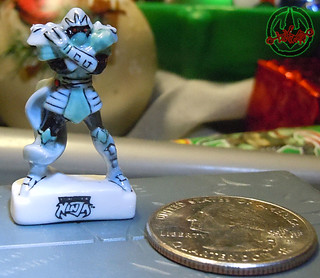 However this tradition has been a major device in holiday celebrations overseas and in South America for a VERY long time.
However this tradition has been a major device in holiday celebrations overseas and in South America for a VERY long time.
 I am sure some areas in North America may also partake in the breaking of “KING CAKE” to guide the Magi to the Baby Jesus and a special porcelain treasure being found by “THE KING or QUEEN for the DAY” in their special cake.
I am sure some areas in North America may also partake in the breaking of “KING CAKE” to guide the Magi to the Baby Jesus and a special porcelain treasure being found by “THE KING or QUEEN for the DAY” in their special cake.
~ t

